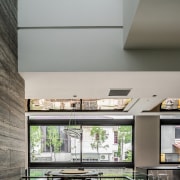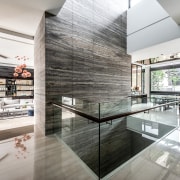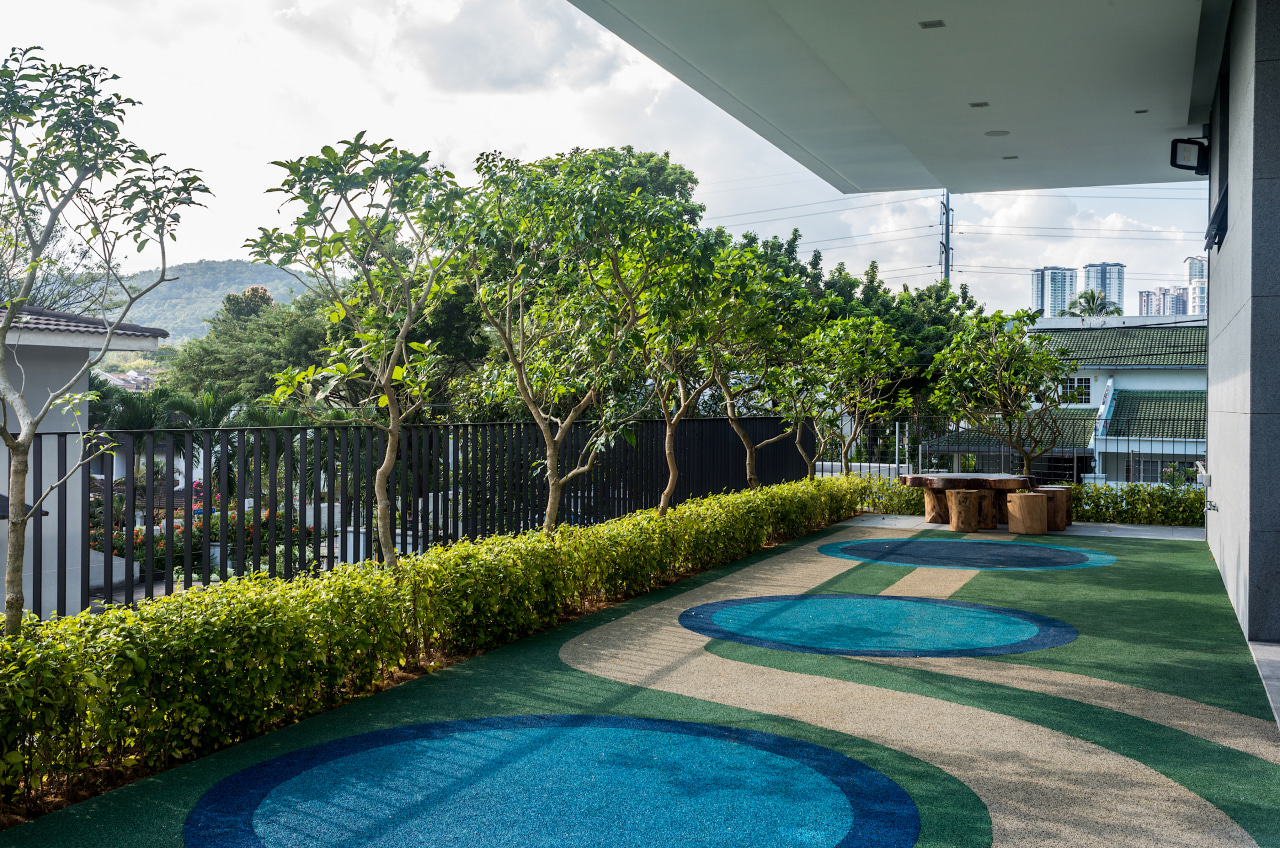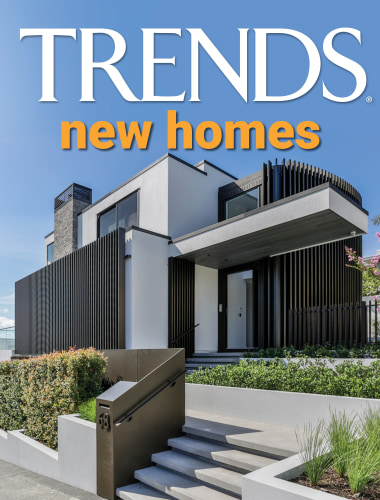Just a jump to the left
Take two rectilinear boxes, off set them, and a wealth of ancillary spaces are the result – such was the plan for this naturally cooled tropical home
Designed by Design Collective Architects
From the architects:
The project is built over 2 plots of land located in the affluent mature residential enclave of Damansara Heights, Kuala Lumpur.
The average residential plot in the area has a lot size of 600m², most often complete with a standard double-storey house built in the 1980s.
The houses were small, built up and generic.
Over the years, many of these homes have sold and been demolished & rebuilt to reflect the current needs.
In their place, houses with more rooms are usually built to accommodate larger family units of multiple generations.
Standards of living are also higher with the increase in property value.
In addition, local guidelines also provided for the increase in storey height, density and size of homes.
These conditions encouraged an extended period of transition for the surrounding neighbourhoods
The context was still in a state of flux, with neighbouring homes putting up for sale signs and some already sold and new houses are also being planned.
The approach for the design of this house took all these factors into consideration and attempted to address the future context of its surrounding.
Design brief
The young couple bought the 2 plots of land with the intention to build their home for their growing family.
The house is to have sufficient space and flexibility to cater to the owners' long term needs.
A detailed and extensive design brief was discussed which includes rooms for grandparents, maid’s quarters, guest rooms and home offices as well as planning considerations to adhere to their specific feng shui placements, orientations and guidelines.
Shifting boxes
The design in essence consists of 2 rectilinear boxes that are placed on top of one another but shifted out of alignment.
The shifting of the boxes creates a covered verandah along the ground floor and a terrace on the upper level.
This shift also breaks the continuity of the vertical core, allowing for a secured control point and physical separation of the public and private spaces along the stair core.
Modernity in the tropics
The home explores the idea of a modern minimalist form adopting the principles of tropical architecture and design.
Principles of natural ventilation are achieved by restricting the building depth to ensure effective cross-ventilation through the house.
Operable sliding windows and doors are located on opposite sides to allow for air to move through the building.
Internal voids and staircases are designed as heat stacks to extract warm air upwards to exhausted through openings above.
The front of house faces north-west (315°N) and is considerably warm under a hot afternoon sun.
To manage natural daylighting and avoid excessive heat gain, vertical sun shading elements are introduced along the north-west façade (front elevation).
A landscaped garden provides shade on the south-western side.
Credit list
Civil and structural engineers
Quantity surveyor
Glazing system
Flooring
Awards
Interior design
Mechanical + electrical engineer
Sanitary wares
Kitchen appliances
Glass elevators
Designed by: Design Collective Architects
Story by: Trendsideas
Photography by: Wong SzeMing and Darren Ch’ng, Creative Clicks; Design Collective Architects
Home kitchen bathroom commercial design



















